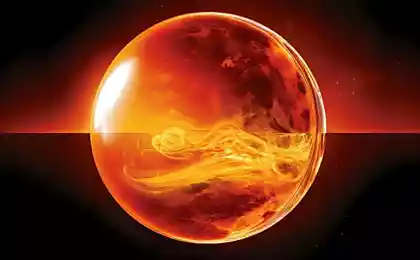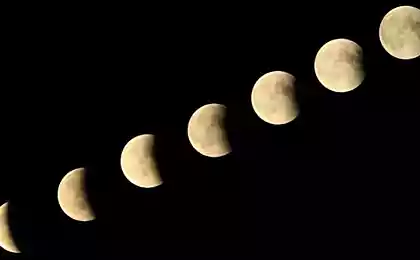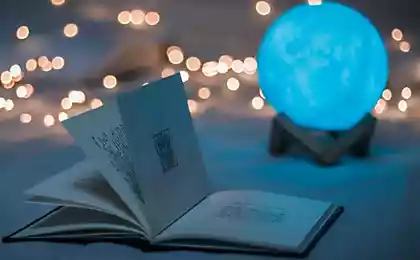841
Ways of looking at the sun
Tomorrow residents western part of our vast country will be able to observe a rare phenomenon - a solar eclipse. Unfortunately, his "epicenter» придётся the northern part of the Atlantic and the Arctic Ocean, so that the most lucky Iceland. But we will also be something to see - for example, in Moscow there will be a phase of 0.65.

The longest in the XXI century eclipse, July 22, 2009. Kagoshima, Japan, the author Takeshi Kuboki sub>
The last time a total solar eclipse was observed in Russia August 1, 2008, and the next time will have to wait right up to March 30, 2033. So catch the chance, ladies and gentlemen, it falls infrequently. If you live in the depth of the eclipse covered areas and firmly set out to observe this phenomenon, it is recommended to prepare the material and technical base. And in fact, as the proverb says, at the Sun through a telescope, you can see twice in your life - right and left eye.
As you know, the naked eye look at the eclipse is strongly discouraged for safety. Of course, some time in the "midst" of the eclipse, it is permissible so long as the vast majority of closed area of the solar disk. But in the initial and final phase is better to use protective equipment. Let's start with the fact that in any case Do not use without filters optical instruments such as binoculars, spotting scopes and telescopes. This is the first rule. A very big chance that you damage the retina and / or thermal burns of the cornea and vitreous. Again, this relates to the initial and final phases of the eclipse, when the brightness is too high.
Do not expect to do conventional sunglasses, they will not protect your eyes. Any methods since Mihailo Lomonosov like zakopchёnnogo glass is also not recommended because of the low efficiency and unpredictability. Ideal - special solar filters. They can be purchased in stores of goods for astronomy. But remember that if you put a filter or primatyvaete to the eyepiece, it can overheat and melt / burst. To avoid this, cover the lens unit opaque cover, or "native" or made from scrap materials. As an option - install filter in front of the lens, then nothing will need to be closed. Yes, and forbid you from shooting eclipse on any photo equipment without a filter.
Life hacking number one: as a filter for optical device, or you can use direct observation points welder. Just keep in mind that the filter should completely cover the lens (lenses) devices, otherwise goodbye vision.
Life hacking number two: if the filters are build does not work, then we can safely observe the eclipse in the projection. To do this, take a sheet of white paper, hold a certain distance to the eyepiece of the device and see the projected image of the sun. Paper, as they say, all endure. Moving the device until you get to the reflected light was just a circle around, and not oval. And the sharpness of the image "induced" by simply moving the sheet closer or farther away from the eyepiece.
Life hacking number three: if you do not have binoculars or a telescope or a telescope, or even points welder, but only a burning desire to watch the eclipse, it is possible to build a simple version of the camera obscura. For this purpose, a sheet cardboard cutouts square hole with a side length of 3-5 cm. In this hole is glued a piece of foil tape and make a tiny hole in it with a needle or pin. Finish: standing back (!) To the sun, bring their wonderful adaptation to any smooth and bright surface (asphalt, the wall of the house), and by adjusting the distance, get inverted image of the star. However, the method works best if it does not stray ambient illumination. So it is best to do it, zadёrnuv blackout curtains and inserting a piece of cardboard between them. Experiment beforehand to adapt himself and not lose precious minutes later eclipse, it will pass very quickly.
And again, when observing astronomical phenomena and celestial bodies always place the unit on a tripod. With more or less marked increase, from 20-fold or more, even snuggling binoculars or a telescope to the window frame or a tree does not help: we are beings living and pliable, can not apply at the time of the rock, so all our micromotions quickly will lead to that you just seasick. Yes, and look at the details on the shivering object in the eyepiece will not work. In general, no pleasure, confusion and a missed opportunity.
By the way, most of the multiplicity of you do not need enough 20-60. And the large diameter of the front lens is also not required, still look at the sun, catch the rare photons do not need. Good Luck! And a nice observation. :)
Source: geektimes.ru/company/mailru/blog/247512/

The longest in the XXI century eclipse, July 22, 2009. Kagoshima, Japan, the author Takeshi Kuboki sub>
The last time a total solar eclipse was observed in Russia August 1, 2008, and the next time will have to wait right up to March 30, 2033. So catch the chance, ladies and gentlemen, it falls infrequently. If you live in the depth of the eclipse covered areas and firmly set out to observe this phenomenon, it is recommended to prepare the material and technical base. And in fact, as the proverb says, at the Sun through a telescope, you can see twice in your life - right and left eye.
As you know, the naked eye look at the eclipse is strongly discouraged for safety. Of course, some time in the "midst" of the eclipse, it is permissible so long as the vast majority of closed area of the solar disk. But in the initial and final phase is better to use protective equipment. Let's start with the fact that in any case Do not use without filters optical instruments such as binoculars, spotting scopes and telescopes. This is the first rule. A very big chance that you damage the retina and / or thermal burns of the cornea and vitreous. Again, this relates to the initial and final phases of the eclipse, when the brightness is too high.
Do not expect to do conventional sunglasses, they will not protect your eyes. Any methods since Mihailo Lomonosov like zakopchёnnogo glass is also not recommended because of the low efficiency and unpredictability. Ideal - special solar filters. They can be purchased in stores of goods for astronomy. But remember that if you put a filter or primatyvaete to the eyepiece, it can overheat and melt / burst. To avoid this, cover the lens unit opaque cover, or "native" or made from scrap materials. As an option - install filter in front of the lens, then nothing will need to be closed. Yes, and forbid you from shooting eclipse on any photo equipment without a filter.
Life hacking number one: as a filter for optical device, or you can use direct observation points welder. Just keep in mind that the filter should completely cover the lens (lenses) devices, otherwise goodbye vision.
Life hacking number two: if the filters are build does not work, then we can safely observe the eclipse in the projection. To do this, take a sheet of white paper, hold a certain distance to the eyepiece of the device and see the projected image of the sun. Paper, as they say, all endure. Moving the device until you get to the reflected light was just a circle around, and not oval. And the sharpness of the image "induced" by simply moving the sheet closer or farther away from the eyepiece.
Life hacking number three: if you do not have binoculars or a telescope or a telescope, or even points welder, but only a burning desire to watch the eclipse, it is possible to build a simple version of the camera obscura. For this purpose, a sheet cardboard cutouts square hole with a side length of 3-5 cm. In this hole is glued a piece of foil tape and make a tiny hole in it with a needle or pin. Finish: standing back (!) To the sun, bring their wonderful adaptation to any smooth and bright surface (asphalt, the wall of the house), and by adjusting the distance, get inverted image of the star. However, the method works best if it does not stray ambient illumination. So it is best to do it, zadёrnuv blackout curtains and inserting a piece of cardboard between them. Experiment beforehand to adapt himself and not lose precious minutes later eclipse, it will pass very quickly.
And again, when observing astronomical phenomena and celestial bodies always place the unit on a tripod. With more or less marked increase, from 20-fold or more, even snuggling binoculars or a telescope to the window frame or a tree does not help: we are beings living and pliable, can not apply at the time of the rock, so all our micromotions quickly will lead to that you just seasick. Yes, and look at the details on the shivering object in the eyepiece will not work. In general, no pleasure, confusion and a missed opportunity.
By the way, most of the multiplicity of you do not need enough 20-60. And the large diameter of the front lens is also not required, still look at the sun, catch the rare photons do not need. Good Luck! And a nice observation. :)
Source: geektimes.ru/company/mailru/blog/247512/
Pirate Party - the most popular party in Iceland
Explorer users Firefox and Chrome - the best workers
























